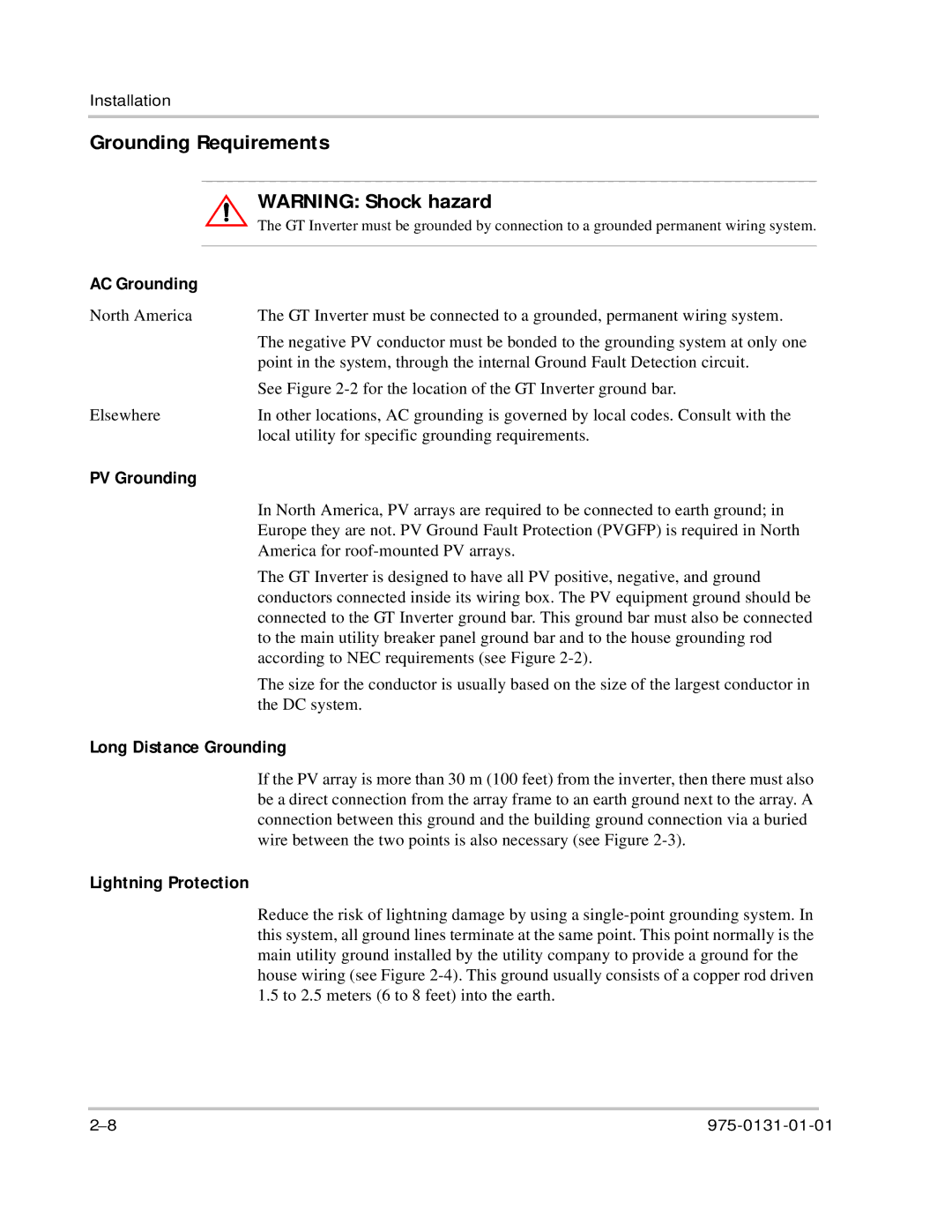
Installation
Grounding Requirements
| WARNING: Shock hazard |
| The GT Inverter must be grounded by connection to a grounded permanent wiring system. |
AC Grounding |
|
| |
North America | The GT Inverter must be connected to a grounded, permanent wiring system. |
| The negative PV conductor must be bonded to the grounding system at only one |
| point in the system, through the internal Ground Fault Detection circuit. |
| See Figure |
Elsewhere | In other locations, AC grounding is governed by local codes. Consult with the |
| local utility for specific grounding requirements. |
PV Grounding |
|
| In North America, PV arrays are required to be connected to earth ground; in |
| Europe they are not. PV Ground Fault Protection (PVGFP) is required in North |
| America for |
| The GT Inverter is designed to have all PV positive, negative, and ground |
| conductors connected inside its wiring box. The PV equipment ground should be |
| connected to the GT Inverter ground bar. This ground bar must also be connected |
| to the main utility breaker panel ground bar and to the house grounding rod |
| according to NEC requirements (see Figure |
| The size for the conductor is usually based on the size of the largest conductor in |
| the DC system. |
Long Distance Grounding
If the PV array is more than 30 m (100 feet) from the inverter, then there must also be a direct connection from the array frame to an earth ground next to the array. A connection between this ground and the building ground connection via a buried wire between the two points is also necessary (see Figure
Lightning Protection
Reduce the risk of lightning damage by using a
